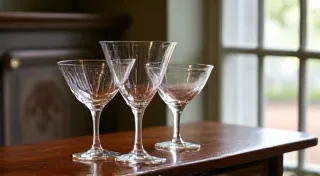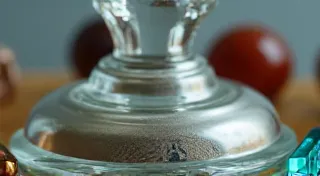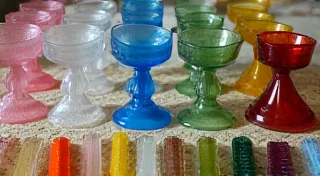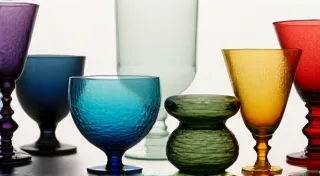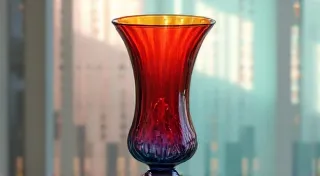The Phantom Bloom: Victorian Glassware and the Cult of Memory
The air in a Victorian parlor, thick with the scent of lavender and grief, held a palpable weight. It was an era defined by elaborate mourning rituals, a profound respect for the departed, and a burgeoning obsession with preserving memories. While photography was still nascent, and paint a luxury, glass emerged as a stunningly fragile, luminous medium to embody these emotions. More than just vessels for serving tea or displaying flowers, these pieces became poignant memorials, tangible links to lives lost and legacies cherished. Understanding antique glassware patterns is, in a profound way, unlocking a window into this fascinating cultural phenomenon – the Victorian cult of memory.
My grandmother, Elsie, was a collector. Not in a grand, museum-worthy way, but with a quiet, devoted passion. Her china cabinet wasn’t filled with opulent showpieces, but with a curated selection of antique glassware, each piece whispering a silent story. I remember, as a child, being captivated by a particularly beautiful goblet – a delicate cranberry glass, etched with a cluster of lilies. "This belonged to a woman named Clara," she’s tell me, her voice soft, “She lost her son in the Crimean War. Her family commissioned this for her, a reminder of his spirit.” That goblet, and the stories behind it, were my introduction to the world of antique glassware, and the deeply personal narratives it holds.
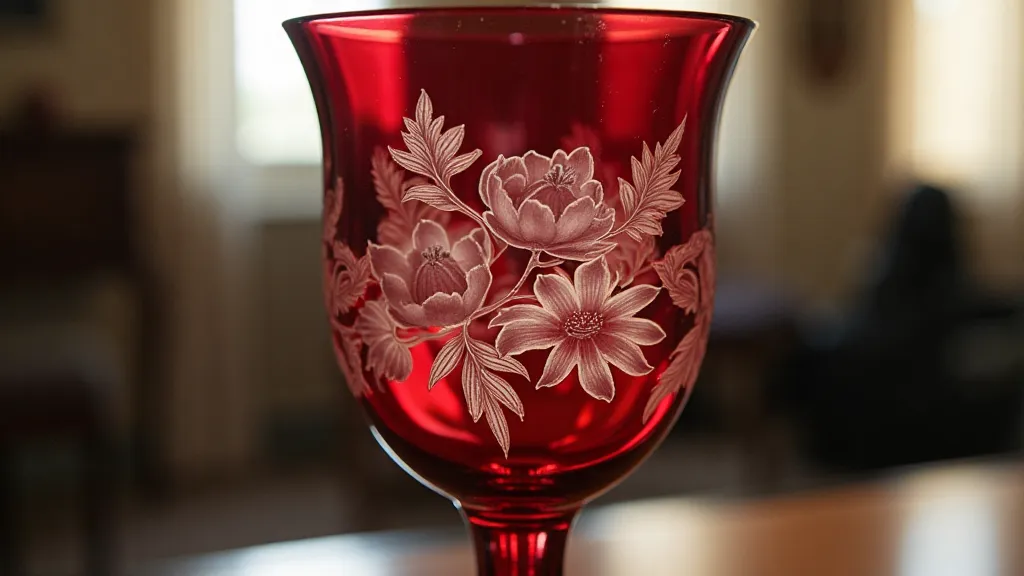
The Rise of Commemorative Glassware
The mid-19th century witnessed a remarkable shift in societal attitudes towards death. Victorian mourning practices were elaborate, involving specific clothing, jewelry, and household items designated for the mourning period. The Great Exhibition of 1851, showcasing industrial innovation and global crafts, also inadvertently fueled the demand for commemorative objects. Glass factories, eager to capitalize on this growing market, began producing pieces specifically designed to honor the deceased – or even commemorate significant events. The Crimean War, the American Civil War, and the deaths of royalty all provided fertile ground for the burgeoning industry.
Early commemorative pieces were often custom-made, hand-engraved with names, dates, and personalized motifs. These were reserved for the wealthy, creating bespoke memorials that reflected the individual’s status and the depth of their grief. As technology advanced and glass production became more efficient, patterns began to emerge, allowing factories to mass-produce items while still offering a degree of personalization. Suddenly, even the middle class could acquire a beautiful, etched glass to remember a loved one. Learning to spot these patterns can be a rewarding endeavor. If you're interested in refining your eye and discovering more about the nuances of identifying different styles, consider exploring resources dedicated to improving glass identification.
Recurring Motifs: Flowers, Flags, and Fables
Understanding these patterns is key to identifying the stories behind the glass. Certain motifs became symbolic shorthand for mourning and remembrance. Lilies, of course, are universally associated with purity and sympathy. Forget-me-nots, as their name suggests, symbolized remembrance and faithfulness. Wreaths, often intertwined with other floral elements, represented eternal life and the cycle of nature. Ivy, clinging to structures, symbolized enduring love and devotion.
Beyond floral imagery, patriotic symbols became popular, particularly after major conflicts. American flags, British lions, and military emblems were often incorporated into commemorative pieces, honoring soldiers who had fallen in service. Personalized emblems, like crests or coats of arms, were also common, reflecting the family’s lineage and pride. Occasionally, narrative scenes – illustrations from popular poems or fables – were etched into the glass, conveying moral lessons or celebrating the virtues of the deceased. Recognizing these recurring motifs can often provide clues about the context and purpose of the piece. The prevalence of these symbols speaks to a broader cultural understanding of grief and remembrance in the Victorian era, a period when even the smallest objects could carry profound emotional weight.
The engraving styles themselves evolved over time. Early pieces often featured elaborate, flowing designs executed by skilled artisans. As production became more mechanized, engraving became simpler and more uniform, sometimes utilizing techniques like diamond cutting to create repetitive patterns. The quality of the engraving, the depth of the cuts, and the precision of the lines can all offer insights into the age and origin of the piece. The variety of glass types employed also added layers of meaning. For example, the production of milk glass, with its distinctive opalescent appearance, gained prominence during this era, often representing innocence and fragility. The milky quality of the glass itself seemed to embody a sense of ethereal beauty, perfectly suited for memorializing loved ones. Understanding the history of milk glass production helps us appreciate its significance within the context of Victorian mourning rituals.
Glass Types and Their Significance
The type of glass itself also played a role in the symbolism. Ruby red glass, often referred to as cranberry glass, became associated with mourning and sacrifice. Its deep, rich hue was seen as a representation of the blood shed in battle or the deep sorrow experienced by those left behind. Black glass, though rare, was explicitly linked to mourning and loss. Clear glass, sometimes tinted with subtle hues like amethyst or blue, was often used to create a sense of ethereal beauty and remembrance. Opalescent glass, with its milky, iridescent quality, evoked a sense of otherworldly peace. The spectrum of colors available during the Victorian period allowed for an incredibly nuanced expression of grief and remembrance, moving beyond simple black and white to represent the complexity of human emotion.
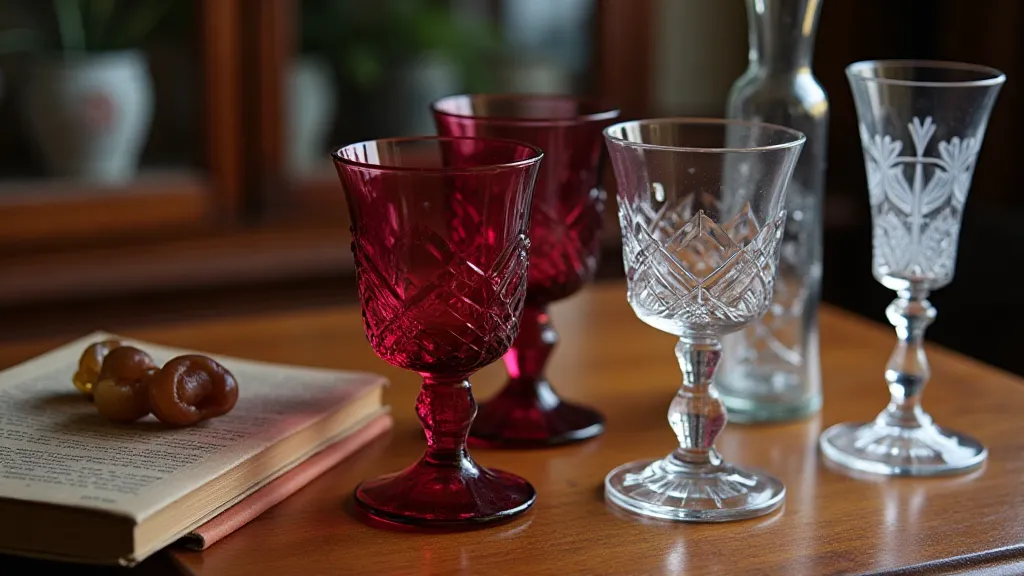
Delving Deeper: Identifying Marks and Styles
While recognizing motifs and understanding the symbolism are crucial, identifying the manufacturer can provide further insights into the history and value of a piece. While many pieces lacked signatures, some factories did mark their wares. A comprehensive guide to decoding glass marks can be a valuable resource in this process. The marks themselves, even seemingly insignificant details, can provide clues to the origin, production date, and sometimes even the intended purpose of the glassware. Deciphering these often cryptic markings is like unlocking a secret code, revealing more about the craftsmanship and history of each piece. Identifying the mark can often be the key to understanding a piece's provenance and its place within the broader landscape of Victorian glassmaking.
Beyond manufacturer's marks, certain styles and techniques also became associated with specific periods or regions. For instance, the use of pontil marks (small depressions left by the pontil rod used in glassmaking) can help determine the age of a piece, as the move towards more advanced processes gradually eliminated them. Similarly, the presence of air bubbles or swirls within the glass, while sometimes considered imperfections, can actually be a testament to the artisanal techniques used in their creation. These so-called imperfections provide a tangible link to the human hands that shaped each piece, a stark contrast to the mass-produced items of today.
The Enduring Appeal and Preservation of Victorian Glassware
The legacy of Victorian glassware extends far beyond its historical significance. Today, collectors worldwide cherish these delicate relics of the past, drawn to their beauty, craftsmanship, and the stories they hold. Preserving these pieces is a responsibility, requiring careful handling, proper storage, and a respect for their fragility. The beauty of these vessels isn's just in their appearance, but in the connection they provide to a bygone era, a time when craftsmanship and sentiment were intertwined. The continued interest in Victorian mourning practices demonstrates a fascination with a time when grief was openly expressed and intricately woven into the fabric of daily life. The fragility of these pieces mirrors the fragility of life itself, reminding us to cherish the moments and memories we hold dear.
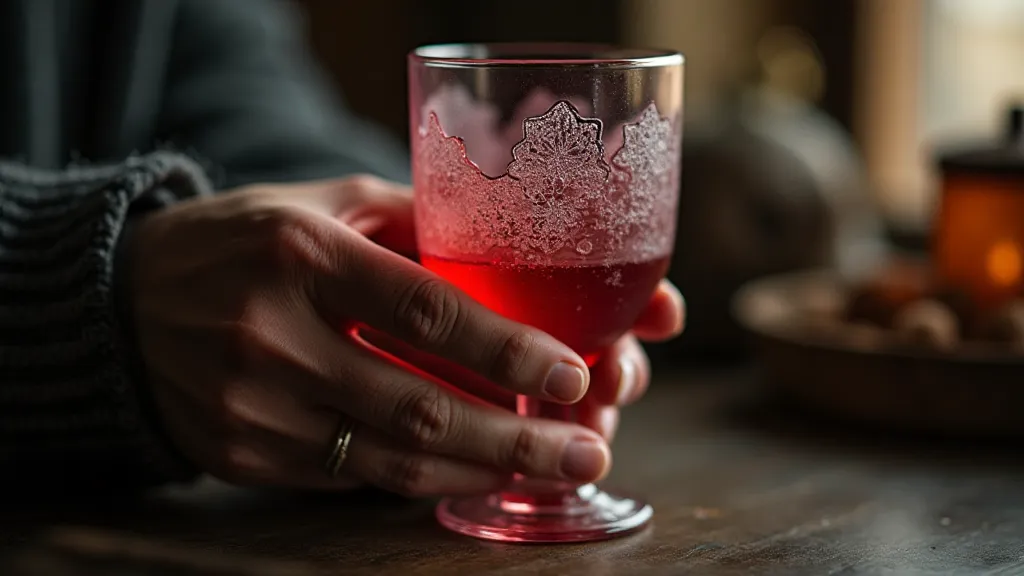
My grandmother Elsie passed away some years ago. Her china cabinet remains, still filled with those precious pieces of glassware. I remember carefully storing the cranberry goblet she told me about. It’s more than just a beautiful object. It’s a link to her, to Clara, and to the Victorian era’s profound and poignant way of honoring those who are gone. And in holding it, I feel the echo of a time when even the most fragile of materials could hold the weight of an entire legacy. The power of remembrance, as embodied by these delicate vessels, transcends time and connects us to a shared human experience.

